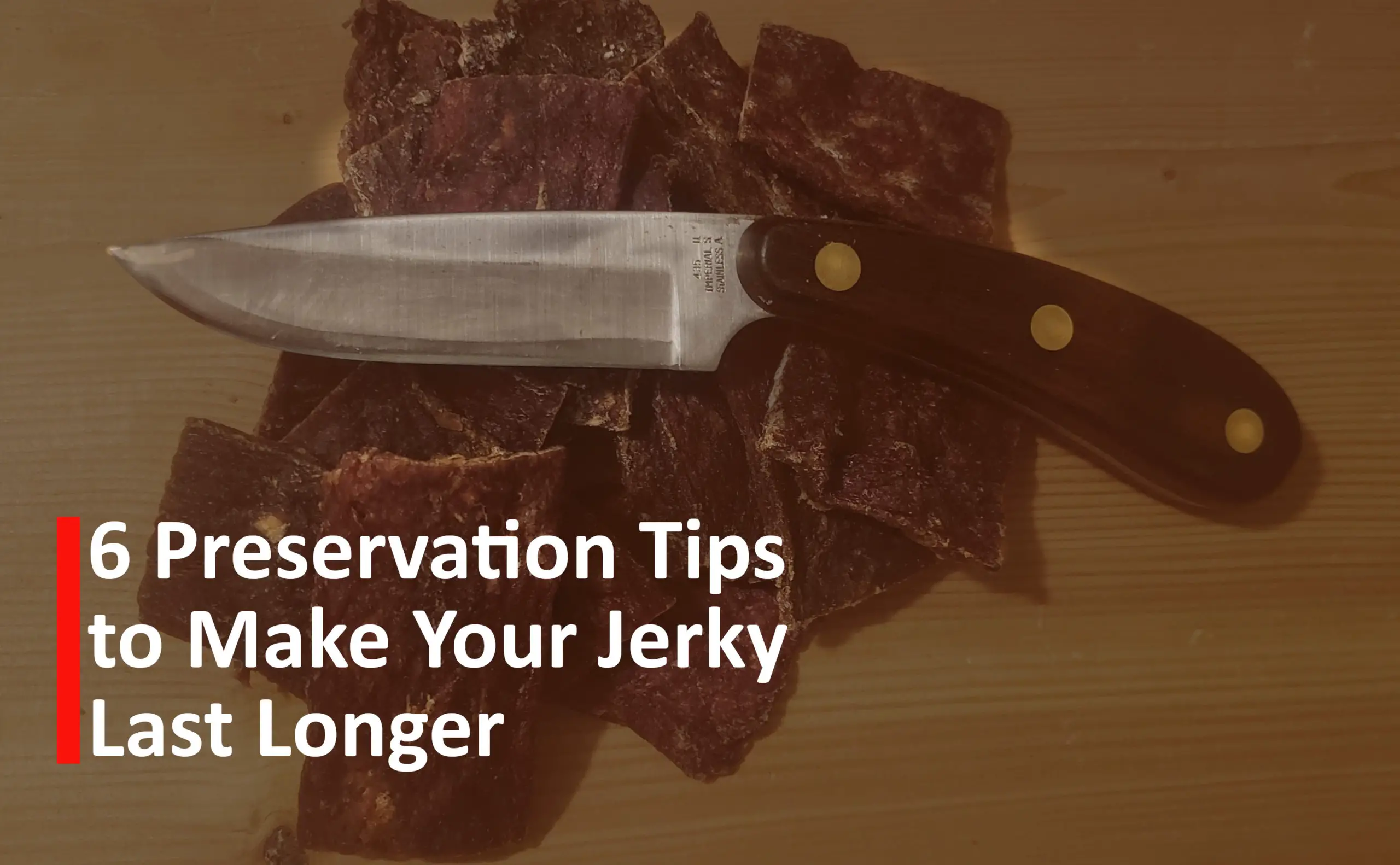Jerky is one of my favorite foods. It also takes some work to make, and the drying process leaves you with less finished product than you feel you should have. I always want more. The last thing I want is for my jerky to go bad. Here are the best ways to improve the shelf life of your jerky and to keep your jerky from going bad.
Freeze Your Jerky
Freezing it will also let you know if there is too much moisture in it. If you freeze it and ice crystals form inside, its wet jerky, and won’t have a long shelf life. Freezing before you put it on the shelf is also another way to kill bacteria and bugs. It doesn’t kill everything, but it helps. People use similar methods to make sure their flour or grain storage is safe and bug free. It’s not as effective or necessary in Jerky, but it also doesn’t hurt it, assuming you’ve dried it long enough. If you have the freezer space to store the jerky in the freezer, just leave it there. We’ve stored jerky in the freezer for years. If you’ve sealed it well, it’ll last and continue to be delicious.
Dry it Longer
When you make Jerky, you’re supposed to dry it until you can see white fibers when you bend it. While this makes it safe and tasty, if you want it to last longer, you try to pull even more moisture out of that. What we do is run it on the smoker until we get the white fibers, then if we want it to be super shelf stable, we transfer it to our dehydrator to pull even more moisture out. The less moisture you have in the meat, the less likely it is to go bad.
Smoke Your Jerky

Smoke gives the meat an acidic coating. This acidic coating helps preserve the meat, making it less likely for bacteria to grow. It’s the same idea behind pickling food. The acid helps preserve the food. It also helps to dehydrate the meat, pulling moisture out. Smoke flavor is also absolutely delicious. Most jerky recipes try to mimic this by using liquid smoke. The real deal just tastes better. Imagine- real is better than fake. Who knew? Our go to smoker is the Traeger. It’s time tested and has never failed me. You don’t go back to a regular grill after a Traeger.

Oxygen Packets

You find oxygen absorption packets in all your commercially produced jerky. Why? It works. Bacteria and bugs need oxygen and moisture to grow. It’s part of the respiratory cycle for every aerobic living thing. We all need it. This pulls out that oxygen, giving you more protection. We did an entire article on oxygen absorption packets entitled Oxygen Packets 101 if you want to learn more.
Vacuum Seal It

Vacuum sealing your jerky, like the oxygen packets, is also a way to remove oxygen from your food storage. This helps protect it from bacteria. Vacuum storage bags are also pretty robust usually. Having a strong bag like a vacuum storage bag also helps you keep your bags from being ripped and torn, letting in oxygen and whatever bacteria may be around you. It’s just not sanitary. Vacuum sealing is your friend to help prevent this. You can still puncture them, but they are much more robust than your average Ziploc bag.
Preserving Salts

Salt is used to provide flavor, but it also is used to cure the meat, pulling more of the water out of the meat, again, making the meat a place bacteria can’t survive. This is also why salt is used in preserving other foods as well. Salt is also used in preserving animal raw hides. By salting the fur, it pulls out the water and leaves it salty, making it a place where bacteria won’t grow. Our go to is the pink curing salt. It is designed specifically for curing foods, especially jerky. The nitrate in the salt will also help the meat maintain some redness, essentially causing a smoke ring. This doesn’t do anything for flavor, but it makes it look better. It’s also a sign that you had a good cure to the jerky, meaning you’re setting it up to last longer.

Keep Learning
Prepping is an ongoing venture. Because of this, we recommend that you subscribe to our bimonthly newsletter to keep prepping, emergency preparedness, and self reliance on your mind. We promise, we’re not spammy, which is why we only email you twice per month. We hope you think about being prepared more than twice per month, but our newsletter is a valuable resource to help you learn new things, and just to keep prepping on your mind. Right now you can also sign up for free. You can also follow our Facebook Page for regular articles and resources.

We recommend having a 6 month emergency fund. This may require you to utilize your food storage, and you may need to cut spending in a similar way that you would if stores were closed. It can take…. READ MORE

The first snare I set for a rabbit didn’t catch anything. I was about 10 and had rigged a slip knot with some bailing twine and set it on a game trail. I didn’t know if rabbits used the game trail, but it seemed like a good spot…. READ MORE

Many people are daunted by the idea of starting their food storage. You can get about 1 month of food and some water storage for less than $100. It’s really easy, and the peace of mind it gives you is incredible… READ MORE



1 thought on “6 Preservation Tips to Make Your Jerky Last Longer”
Comments are closed.